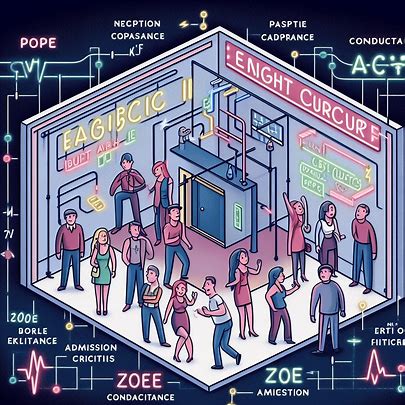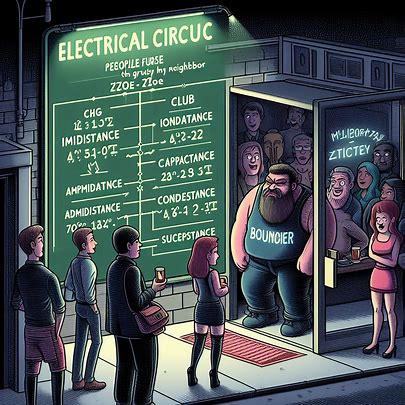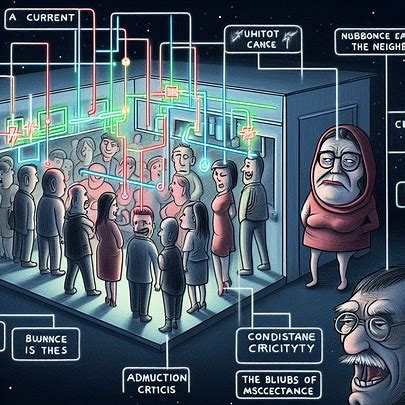Cracking the Code of Electrical Jargon: Demystifying Capacitance, Reactance, Impedance, and Friends
Scenario: The Electric Nightclub
Imagine a popular nightclub with a fancy and exclusive VIP room, pulsating with energy as people clamor to get inside. But wait! Entering this exclusive establishment isn’t as simple as strolling through the front door. Oh no, there are challenges aplenty…
1. The Popularity Quotient: Picture the crowd outside the club as the voltage (V), which is the electric potential difference that ‘pushes’ the current (I), the flow of electrical charge — represented by the people in this analogy. The more effort people make to get into the club, the more it is like a higher voltage pushing more current.
2. Club Capacity: Ah, here’s where capacitance (C) comes into play. Imagine the VIP room with a strict capacity of 20 people. Just like the club can only hold a certain number of customers, capacitance is the ability of a component to store charge. And just as the club can only admit more people if some leave, a capacitor can only store more charge if some is discharged.
So far so good?
Let’s address the other challenges:
- Clubs rules:
- Impedance (Z): Impedance is a measure of how much a circuit resists the flow of electric current. It extends the notion of resistance to AC circuits, incorporating both magnitude and phase. In our nightclub analogy, impedance is like the combination of the club’s strict rules + unsaid rules (the bouncer’s judgment + external constraints) — it’s not just about the rules but also about how they are applied. Just as the complex impedance has both a real and imaginary part: Z = R+ jX [resistance and reactance]
Let’s explore the imaginary part of the equation: the bouncer’s judgment + external constraints.
Bouncer:
-
- Conductance (G): Meet our formidable bouncer, who rigidly enforces the club’s rules, allowing only those who meet the criteria to enter. This is conductance, measuring how easily electrical current flows through a material – in our case, how smoothly guests can breeze past through the door. A friendly and flexible bouncer who lets more people in, represents a material with high conductance — the opposite is also true.
-
- Admittance (Y = G + jB): admittance is like the inverse of the bouncer’s strictness. It denotes how easily current can flow through a circuit. In our club scenario, certain guests will find it easier to enter based on the bouncer’s values and beliefs. Similarly, in an electrical circuit, certain frequencies of current flow more easily depending on the components within it.
-
- Reactance (X): Now, picture the bouncer in action at the club’s door, screening guests based on their attire and age. Reactance is just like that: the opposition to the flow of alternating current (AC) in a circuit; It checks the AC current and only allows certain frequencies to pass through, while blocking others. Just as our bouncer makes it harder for guests to enter the club, a high reactance makes it harder for the AC to flow through the circuit.
So… What is the exact difference between these terms?
Basically, conductance deals with the ease of current flow through a material, admittance reflects both the ease of current flow and the reactive behavior (storing and releasing energy) of a circuit in response to changes in frequency, and reactance specifically refers to the opposition encountered in AC circuits due to capacitance or inductance, quantifying the reactive component of impedance.
External constraints: Zoe, the grumpy neighbor who’s always complaining about noise levels.
Susceptance (B): Finally, imagine Zoe, a grumpy neighbor who opposes the flow of people lining up based on her perception of how noisy the night will be. Similarly, susceptance measures how much a circuit element (like a capacitor or an inductor) will “react” or change in response to an AC signal. This means that a circuit with high susceptance is more capable of conducting a changing current, just as Zoe might be more tolerant on quieter nights.
Did you get it?
Whether you’re an electrical engineering student, a seasoned professional in the trades, or a diligent soul preparing for the FE or PEG exam, remember – understanding complex concepts is not just about memorizing formulas; it’s about forging connections and finding meaning in the midst of complexity. Understanding the intricacies of electrical phenomena can feel like navigating a maze of technical jargon. But hopefully, through the power of storytelling, you can pave the way to retention and comprehension.
I hope this analogy resonates with you and aids in your understanding of these important electrical concepts. And if not, at least it might inspire you to create your own analogy! Best of luck with your next story, and may your learning journey be as enlightening as it is entertaining.
Happy learning!




